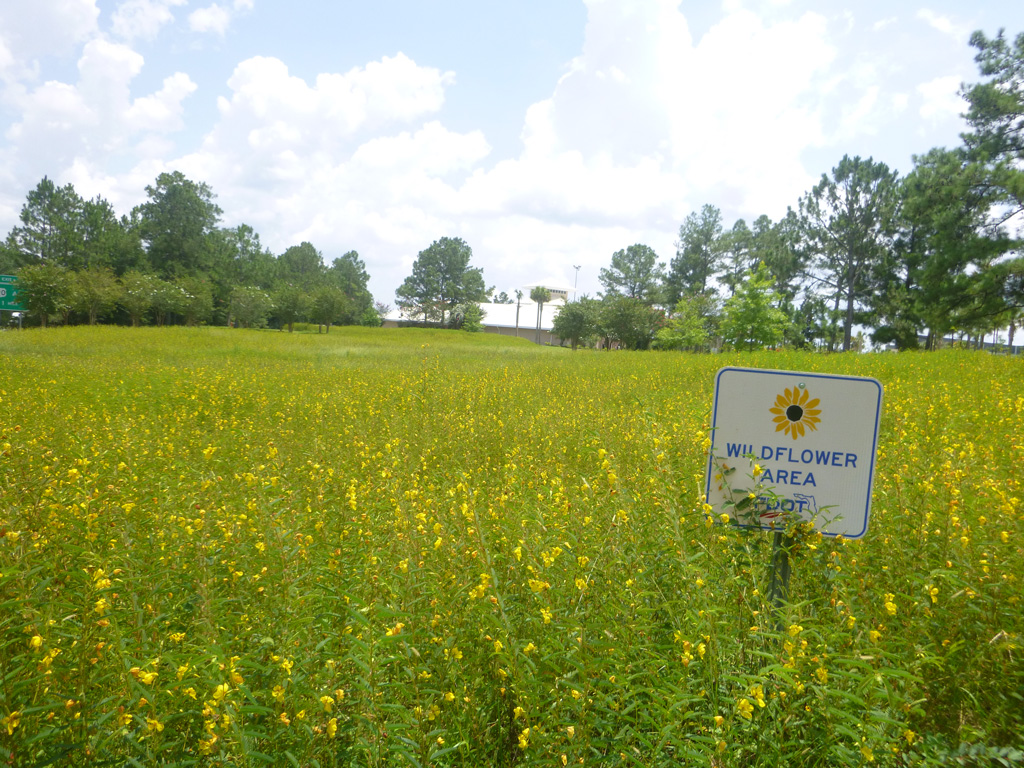Summer news from PWA counties
Calhoun County:
Wildflower Festival and a post-hurricane community donation
The fifth annual North Florida Wildflower Festival held in late April in Blountstown was a welcome respite from nonstop hurricane recovery for the local community. Volunteers from the Florida Wildflower Foundation and Florida Native Plant Society Magnolia Chapter shared a booth and distributed publications. More than $630 in donations collected will be contributed to the community to replant trees and native wildflowers damaged by the hurricane. The Magnolia Chapter committed additional funds to bring the total to $1,000. A team of residents, FNPS and Panhandle Wildflower Alliance members, and county staff are planning a planting day in late fall in partnership with a local Future Farmers of America chapter and other groups.
Escambia County:
Enthusiasts start new wildflower roadside program
A small but enthusiastic group of wildflower enthusiasts met at the UF/IFAS Extension in May to learn about starting a roadside wildflower program. Attending were Neil Richards, Duane Tant and Extension Agent Carrie Stevenson. Duane, a member of the Florida Native Plant Society Longleaf Chapter, has offered to take the lead. We wish them the best of luck as they work to get the wildflower program off the ground.
Gulf County
Native plants take the spotlight at FFGC district meeting
by Susan Wozniak
The Port St. Joe Garden Club hosted 11 other Panhandle clubs in May for the Florida Federation of Garden Clubs (FFGC) District II meeting. Liz Sparks, the Florida Wildflower Foundation’s FDOT/Panhandle Wildflower Alliance liaison, was on hand to advise nearly 100 attendees about the importance of including native wildflowers as they revitalize their landscapes after Hurricane Michael.
With that ecological mission in mind, native plant materials were used to create table centerpieces, evoking sentiments regarding both the devastation and the ongoing recovery in the wake of Hurricane Michael. A thick slab of wood from a Bald cypress (Taxodium distichum) downed by the storm provided a solid base for each arrangement. The background for the composition was a fan of lime-green Saw palmetto (Serenoa repens), a species recognized for its tenacious roots. Spanish moss (Tillandsia usneoides) — which goes dormant during times of stress only to revive later in a refreshing summer rain — lent the floral design a soft, comforting touch. For a final flourish, deep-green Sword fern (Nephrolepis exaltata) fronds were interspersed to infuse uplifting notes. The Port St. Joe Garden Club heartily encourages homeowners to paint their landscapes with Florida’s vibrant native wildflowers!
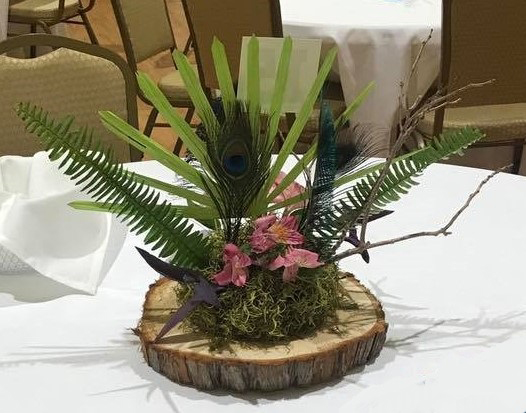
Jefferson County:
Back roads are popping with native wildflowers
by Jennifer Mason
Depending on the elevation and environment, there were many wildflowers on our back roads this year. There was an amazing array of color along the county’s dirt roads.
If you drive down to U.S. Highway 98 and venture off the beaten track on the dirt roads, you will see the showy pink Rose-of-Plymouth (Sabatia stellaris). Check out the Plank Road State Forest grade. It takes you down to the St. Marks River, where Rose-of-Plymouth is blooming in profusion along the road. This spot is rarely mowed. Even the sides of paved county roads are displaying this flower.
Wet ditches along roads in Lamont and Capps have had Blue flag iris (Iris virginica), Cattail (Typha spp.), Pink tickseed (Coreopsis nudata) and Rose-of-Plymouth blooming. Many species of Coreopsis are still blooming along our roadsides. Vanillaleaf (Carphephorus odoratissimus), aka Deertongue, is a tall aster with purple flowers that is present around the county in wet ditches. The leaves of this plant smell strongly of vanilla several minutes after picking. It was once grown to flavor tobacco. It is a perennial that reseeds readily, which is why it is so important to let them bloom and go to seed before mowing or cutting.
Leon County:
FWC City Nature Challenge puts Leon, Tallahassee on world stage
Panhandle Wildflower Alliance members participated in the first City Nature Challenge, held April 26-29 in Tallahassee and Leon County, by making nature observations and helping to curate survey results. Residents and visitors were encouraged to make nature observations using the iNaturalist app as they competed with over 170 cities worldwide. The challenge, sponsored by Florida Fish & Wildlife Conservation Commission and WFSU, put the species diversity of Tallahassee and Leon County on the world stage. Leon placed first in number of observations and number of species for our population category, fifth in number of species per capita, and fourth in number of observers per capita — an impressive result for our first year! The majority of observations were of plants and trees so volunteer PWA members like Scott Copeland shared their botanical skills to help curate plant species and showcase Leon County’s impressive biodiversity.
Dr. Loran Anderson, FSU professor emeritus, said that “one way to determine the richness of our flora is to view the map of Florida’s counties the online Atlas of Florida Plants maintained by the Institute of Systematic Botany at University of South Florida. Place your cursor over a given county to see the number of documented plant species for that county. The number is a bit biased because it reflects the documented occurrences for the county, so areas that are inventoried by botanists more frequently will have higher numbers.” Absolute numbers can only be known with a complete survey, which is an impossibility, he said. Still, as of mid-March of this year, “seven of the top 10 counties in the state are Panhandle counties, with Leon County being clearly No. 1! Obviously, we have very active botanists.” He noted that “the three non-Panhandle counties happen to have universities and therefore botanists within them.”
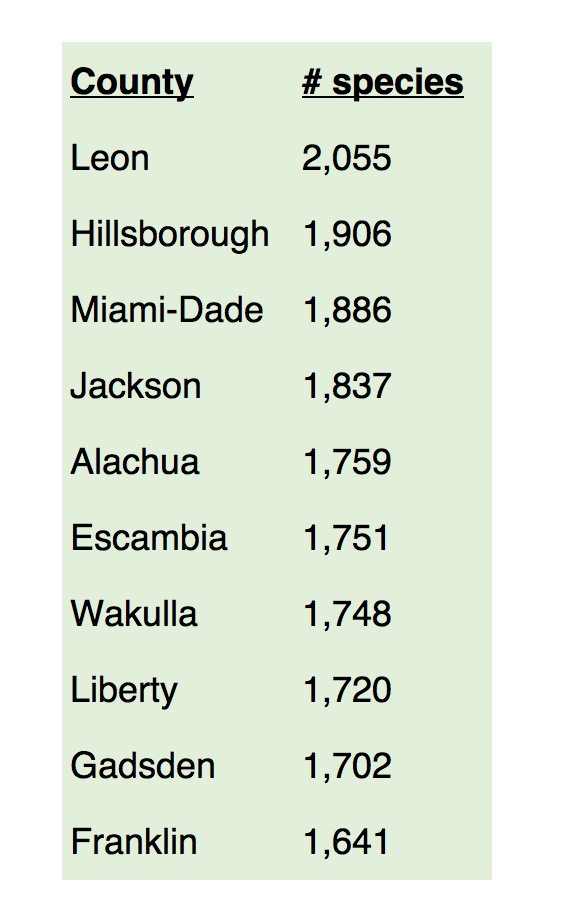
Santa Rosa:
Mowing challenges and learning to grow native milkweed
by Suzanne Spencer
Santa Rosa County experienced several setbacks in its roadside wildflower program earlier in the year, leading to some disruptions in the spring wildflower season. An exceptionally wet fall and winter pushed the scheduled late-season full right-of-way mowing of designated Wildflower Areas into late February and March. The roadside conditions were deemed too wet to mow, as undesirable rutting would occur and damage plant populations. Spring mowing shortened the growing season for several wildflower species, especially for Purple thistle (Cirsium horridulum). The excessive growth of weedy shrubs and tree seedlings, along with dead seed heads, grasses and wildflowers from last season, really needed mowing to reduce competition in order for the naturally occurring wildflower populations to flourish.
An unauthorized mowing was conducted on Dickerson City Road in April, which took out most of the plants along the 1-mile stretch of road, including blooming Whitetop pitcherplants (Sarracenia leucophylla) and budding Tracy’s sundews (Drosera tracyi). The Wildflower Area sign on the road was missing, and the mowing supervisor was off the day this occurred. While it was disheartening, the plants were not destroyed and have made a good recovery. Though reduced in size, the pitcherplants have put up new pitchers, and the sundews are about knee-high again. We will continue to monitor for signs being in place and work on communication with all those involved in the reduced mowing program in order to decrease the likelihood of this happening again.
Earlier this year, new power poles were erected along East Bay Boulevard and Munson Highway within designated Wildflower Areas. The ditching and rutting caused by this work left the areas in a muddy mess. It is hoped that many of the wildflowers in the area will recover by next fall and spring.
As a result of having located some nice populations of native milkweed while surveying our roadsides in the county and being introduced to the Monarch Milkweed Initiative headed by St. Marks National Wildlife Refuge Ranger Scott Davis, the Santa Rosa County Master Gardeners, under the direction of Santa Rosa County Horticulture Agent Mary Salinas, have been propagating native milkweed.
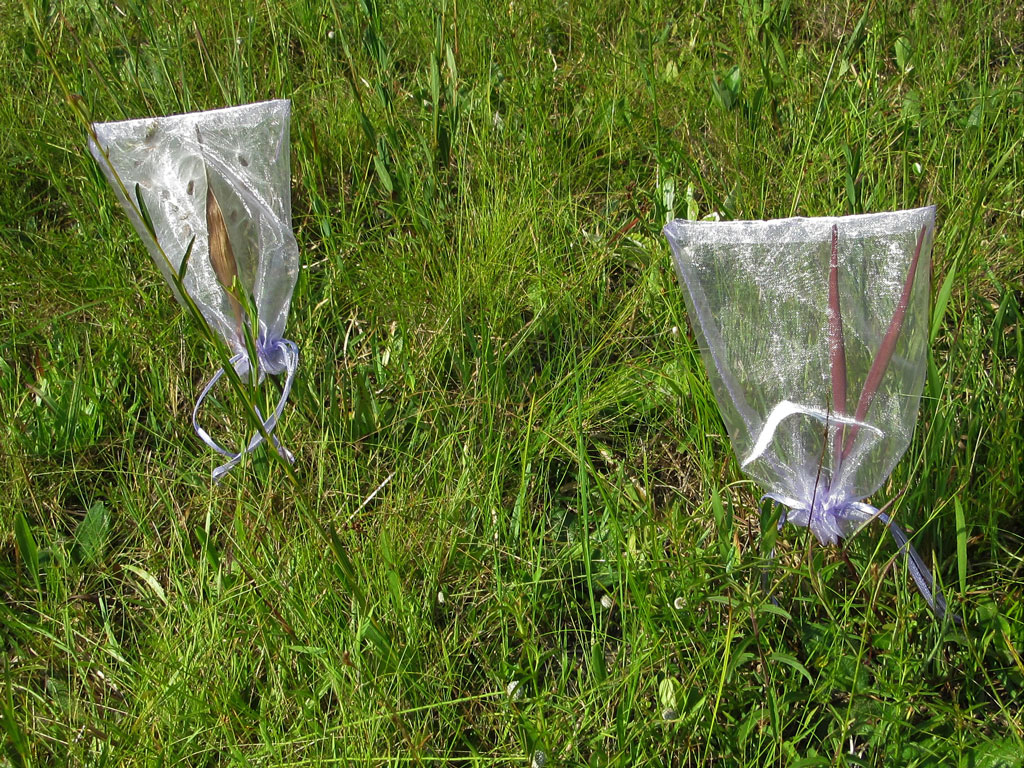
We are working with Swamp milkweed (Asclepias perennis), Butterfly milkweed (A. tuberosa), Pinewoods milkweed (A. humistrata), Fewflower milkweed (A. lanceolata) and Michaux’s milkweed (A. michauxii). We have had very good success growing A. perennis from seeds and cuttings. The other species of milkweed are proving to be a bit more challenging to propagate, but we will continue to work on finding the right techniques with Scott’s advice. To collect seeds, we tie fine mesh bags over the seed pods once they have formed. Our goal is to educate the public about how to grow native milkweed and to provide a good source of plants for home landscapes.
Wakulla County:
Wildflowers sell fast at Master Gardeners plant sale
by Lynn Artz
The fifth annual Wakulla County Master Gardeners plant sale was a big success. We started the day with 742 potted plants. The first to sell out were the wildflowers. There were lots of questions about Florida native plants after Hurricane Michael destroyed many landscapes in our area. We also received questions about the salt tolerance of plants. More than 100 visitors and residents attend the sale. The Class of 2019 Master Gardeners joined the seasoned pros for the plant sale.
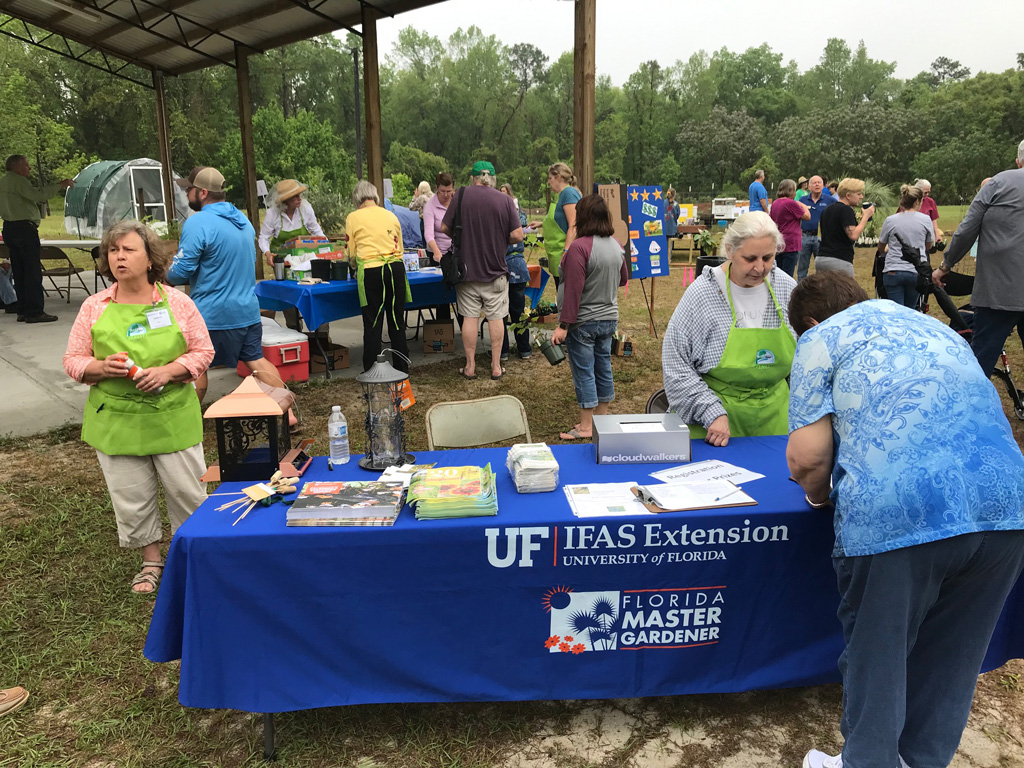
On Earth Day in Panacea, about 30 4-H club members celebrated with planting activities and educational games. Every child left with Redbud (Cercis canadensis) and Narrowleaf sunflower (Helianthus angustifolius) seedlings, as well as pots seeded with Purple coneflower (Echinacea purpurea) and Black-eyed Susan (Rudbeckia hirta). They also received reusable bags from Keep Wakulla County Beautiful filled with handouts and small gifts. The National Wildlife Federation donated Ranger Rick magazines. The seeds, seedlings, soil and pots were donated by PWA members Jeannie Brodhead and Lynn Artz. Jeannie also provided identification guides for butterflies and bees.
Walton County:
Wildflower photos donated to 2 county libraries
Bob Farley, a member of the PWA and the Magnolia Chapter of the Florida Native Plant Society, recently created binders with photos of more than 500 local native wildflowers and donated them to two Walton County branch libraries. A copy featuring 120 species found in the Sunny Hills neighborhood is at the neighborhood’s branch library, and another binder with 500 species was given to the Freeport Library. Bob is using the Atlas of Florida Plants to verify species occurrence in the county. He also is working on a master copy to produce a species list for each county in FDOT District 3.

